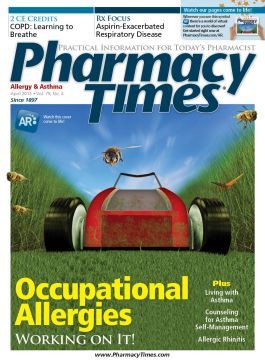Pharmacy Law: What's in a Name? A Potential Lawsuit!
An appeals court rules on the case of a patient who received medication meant for someone with a similar name.

An appeals court rules on the case of a patient who received medication meant for someone with a similar name.
Issue of the Case
When a patient drops off a prescription for dispensing and, on a later return to retrieve the medication, receives his medications plus a number intended for another patient with a somewhat similar sounding name, will he prevail in a lawsuit based on damages resulting from his consuming the medications intended for the other person?
Facts of the Case
The patient in a western state was being treated routinely for diabetes and hypertension. A persistent cough brought him to his physician who issued a prescription. When he presented the prescription at the chain pharmacy, the pharmacist told him the prescriber would need to be contacted. The patient indicated he would return to pick it up the next day.
Approaching the counter the following day, he told the clerk, “I want to pick up a prescription for Lieutenant Taylor.” The staff member retrieved a single plastic bag bearing prescription containers and summoned the pharmacist to speak with the patient. The pharmacist looked at each container, telling the patient how frequently to use the medications and placing them back in the bag. The patient signed an electronic signature capture device for each prescription. Unfortunately, some of the prescriptions presented to him were for “Lennette Taylor.” It should be noted that the patient/plaintiff in this case was illiterate, having dropped out of school following the eighth grade.
The patient commenced using the new medications as directed while also continuing to use his insulin and hypertension medications. After about 2 weeks on this regimen, he began to experience adverse feelings. This led to an emergency department (ED) visit due to difficulty breathing and chest pain although he had discontinued using some of the new medications. The visit to the ED resulted in issuance of another prescription to address the breathing issues. Upon returning home, he resumed using most of the other medications he had received at the pharmacy.
During a subsequent visit to the ED he learned that his heart and kidneys had been seriously injured. He was asked what medications he had been using and his housemate supplied a list. Upon transfer to another hospital, the medication list was presented again and it was at this point that he discovered that some of the prescriptions were not intended for him. Following several additional hospitalizations for kidney failure, he began on dialysis 3 times a week. At trial, a physician testified that the combination of the medications the patient was supposed to be using with the prescriptions he received erroneously caused the kidney failure and heart problems.
During the trial, the pharmacist involved reviewed the processes and procedures used when dispensing medications to patients. Interestingly, she testified on cross examination that she could not recall what had happened on that particular occasion 2 years earlier, but then went on to explain in detail what had occurred, stating repeatedly, “There was no mistake.” She continued by stating that she asked him whether he was also picking up medications for Lennette and he did not respond. He did complete 2 separate transactions, one for himself and one for Lennette. She assumed Lennette was a family member. In fact, on 1 of the transactions the plaintiff checked a box “other” to indicate that he was picking up medications for someone other than himself.
The plaintiff sued the pharmacy chain alleging negligence. When the matter went to the trial court jury that group responded “no” to this question: “Was the pharmacy chain negligent in the dispensing of medication to Lieutenant Taylor?” The plaintiff appealed to the state Court of Appeals, contending that “The evidence compels the conclusion that the pharmacy negligently dispensed to him medications prescribed for another person together with his own medications, without his knowledge.”
The Court’s Ruling
The Court of Appeals ruled that there was indeed substantial evidence to support the jury verdict, so the appeal was denied, resulting in the judgment from the lower court being affirmed. The plaintiff lost at the trial court level as well as on appeal.
The Court’s Reasoning
The court focused primarily on the “substantial evidence” standard as used in the court system of that state. It defined substantial evidence as “evidence that a rational trier of fact (the jury) could find to be reasonable, credible and of solid value.” The evidence from trial is to be viewed in a light most favorable to the judgment and the court is to accept as true all evidence tending to support the judgment, including facts that reasonably can be deduced from the evidence.
If an examination of the entire trial record viewed from that perspective discloses substantial evidence to support the judgment, then the ruling from the trial court must be affirmed. The appellate court’s review of the trial court proceedings was that substantial evidence did exist to support the verdict of no pharmacy liability from the jury.
Dr. Fink is professor of pharmacy law and policy and Kentucky Pharmacists Association Endowed Professor of Leadership at the University of Kentucky College of Pharmacy, Lexington.

